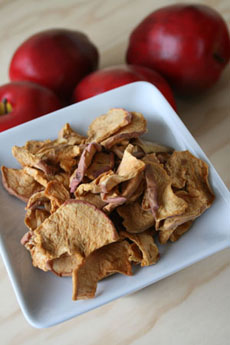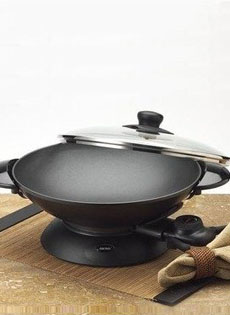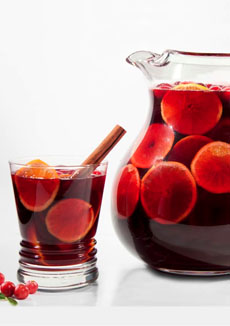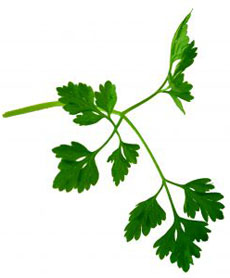
Chervil has been called “the gourmet’s parsley.” A more delicate flavor than parsley, it has a faint note of licorice. Photo courtesy SXC. |
|
THE NIBBLE’s Chef Johnny Gnall advises: When it comes to cooking, not all herbs are created equal. Some have more delicate flavors and can be lost if cooked the wrong way or paired with foods that are too bold. Conversely, some herbs are so flavorful and strong that if used in excess, they can overshadow proteins and produce alike.
Centuries ago, French chefs initiated the term “fines herbs” (pronounced “feen erb”), to designate the more delicate herbs. The category generally includes chervil, chives, parsley and tarragon, though it has been known to also include marjoram, savory and a few others, depending on whom you’re asking. This designation is widely acknowledged by chefs around the world: If a recipe calls for “fines herbs,” you can assure it will include the aforementioned four.
Less official, though no less helpful, is a designation used by chef Jan Birnbaum of Epic Roasthouse in San Francisco, among others. He designates the term “big herbs” to refer to those herbs whose flavors can stand up to heartier meats and vegetables. These “big herbs” include sage, rosemary and oregano, herbs that are very much at home in a roast house such as Epic.
|
To be consistent with the American term, “big herbs,” we’ll now switch from the French fines herbes to fine herbs.
FRESH VS. DRIED HERBS
These herbs, be they “fine” or “big,” are best used in their fresh states to enjoy their truest flavors. Dried herbs tend to have more concentrated flavors, stronger on the palate than their fresh counterparts. You can typically add them to a recipe earlier in the cooking process, as their concentrated strength will stand up to the heat of cooking.
When cooking with fresh herbs, on the other hand, it is typically best to wait until as late as possible to add them to a recipe, when the cooking process will have a greater effect on their flavor and what chefs call “brightness”—generally the reason one cooks with fresh herbs in the first place.
That being said, each has its place in the cooking process; even if you are cooking with fine herbs, using a more delicate protein will allow you to cook them without losing their flavor. With bigger herbs, on the other hand, you can more or less throw caution to the wind: they can handle being roughed up a bit. Here are two recipes, one for fine herbs and one for big ones, utilizing the strengths of each to help crate a delicious dish:
|
RECIPE: FINE HERBS-STUFFED SOLE
Sole is a more delicate fish and will be complemented nicely by fine herbs. Moreover, the use of the herbs in both stuffing and basting in this recipe will give them even more help in holding up to cooking: strength in numbers, one might say.
Ingredients
4 sole filets (6-8 oz each)
1 bunch fresh marjoram
1 bunch chives
1/2 bunch parsley
1 bunch tarragon
|
|
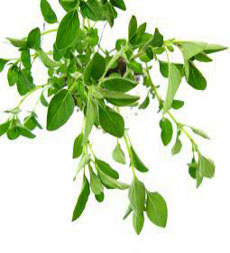
Marjoram: another of the “fine herbs.” Photo by Zsuzsanna Kilián | SXC. |
|
1 cup aïoli (garlic mayonnaise—you can substitute regular mayonnaise)
1 lemon
Salt/pepper
1/4 cup melted butter
Preparation
1. Chop herbs and whisk into aïoli, reserving a teaspoon of each. Add lemon juice to taste, until you achieve desired acidity and brightness.
2. Lay sole filets on a foil-covered baking sheet and season with salt and pepper.
3. Using a spoon or spatula, place a generous dollop of herb aïoli at one end of each filet.
4. Roll up filets so that the herbs are in the center, and secure with a toothpick.
5. Add your reserved herbs to the melted butter and brush each filet generously.
6. Bake at 350°F for 20 to 25 minutes. Baste with herb butter once or twice throughout the baking process.
7. Remove toothpick before serving.
RECIPE: BIG HERBS-CRUSTED LAMB LOIN
The crust you get on this lamb recipe is absolutely scrumptious. If seasoned and seared properly, it will be crunchy and herbaceous, giving way to tender, medium-rare lamb beneath. This is the beauty of big herbs: they can stand up to lamb’s flavor as well as the searing process. Some of the herbs may char a bit here and there, but overall it works quite well with the dominant flavors in the dish.
Ingredients
1 boneless lamb loin (roughly 2 pounds)
1 bunch fresh rosemary
1 bunch fresh oregano
1 bunch fresh thyme
3 cloves garlic
2 tablespoons melted butter + 2 tablespoons olive oil, combined
1/4 cup canola oil or grapeseed oil
Salt/pepper
Preparation
1. Chop garlic and all herbs, combine, and set aside.
2. Using your hands, rub the loin generously with the olive oil and butter mixture, making sure to coat the entire surface.
3. Spread your herb/garlic mixture on a cutting board and roll the lamb loin around in it to create a crust. The better you cover the loin, the more flavor you will get.
4. Season all sides generously with salt and pepper.
5. In a large sauté pan on high heat, heat the oil; sear lamb loin on all sides. This will take roughly 5 minutes; do your best to leave the lamb alone as it sears in order to achieve a nice, crispy crust. A little smoke is okay, as the herbs may burn slightly; just don’t allow it to get to a point where smoke is pouring from the pan. (This step can also be done on a grill.)
6. Finish the lamb in the oven, baking at 400°F for 20 minutes. Remove and let rest for 10 minutes before slicing and serving.
|
|



